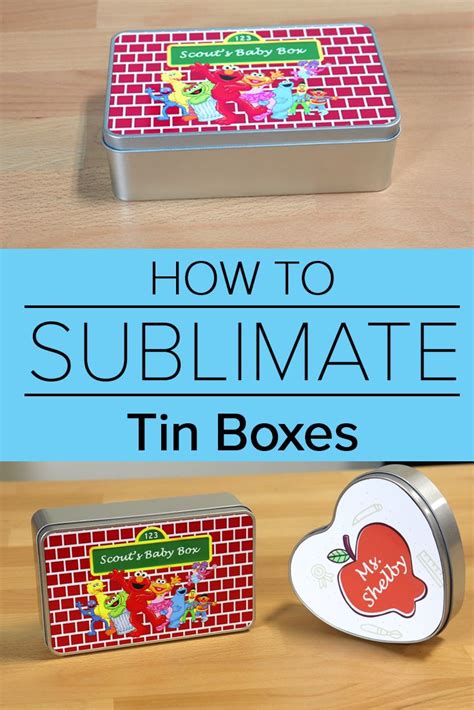How To Sublimate On Metal
Ronan Farrow
Mar 26, 2025 · 4 min read

Table of Contents
How to Sublimate on Metal: A Comprehensive Guide
Sublimation on metal is a fantastic way to create personalized, durable, and vibrant designs on a variety of metal products. From mugs and keychains to license plates and even jewelry, the possibilities are endless. But achieving professional-looking results requires understanding the process and using the right materials and techniques. This guide will walk you through everything you need to know about sublimating on metal.
Preparing Your Metal Substrate
Before you even think about sublimation, the preparation of your metal substrate is crucial. This stage directly impacts the final result, ensuring a strong bond and vibrant colors.
Choosing the Right Metal:
Not all metals are created equal when it comes to sublimation. Certain metals are coated with a special sublimation-compatible layer, essential for the ink to adhere properly. Look for products explicitly labeled as "sublimation-ready" or "sublimation blanks." Common choices include:
- Aluminum: This is a popular choice due to its affordability and readily available sublimation blanks.
- Stainless Steel: While more durable, stainless steel can be more challenging to sublimate on, requiring specific preparation techniques.
Avoid using metals without a sublimation coating. Without this coating, the ink will not transfer properly, resulting in poor-quality or completely failed prints.
Cleaning Your Metal:
A clean surface is paramount. Even the smallest amount of dirt, grease, or fingerprints can prevent proper ink adhesion. Use a mild detergent and warm water, gently scrubbing the metal with a soft cloth or sponge. Thoroughly rinse and dry the metal before proceeding to the next step. Isopropyl alcohol can also be used for a deeper clean, removing any lingering residue.
The Sublimation Process
With your metal prepared, you're ready for the sublimation process itself.
Choosing Your Design:
Create your design using sublimation-compatible software. Remember that mirror images are required for sublimation, as the design will be reversed when transferred. Use high-resolution images (at least 300 DPI) for the best results. Experiment with different color palettes and designs to find what works best for your metal substrate.
Preparing Your Sublimation Paper:
Sublimation paper is a special type of paper coated to receive and transfer the ink. Load the paper into your sublimation printer and print your mirrored design. Handle the printed paper carefully to avoid smudging or damaging the ink.
The Pressing Process:
This is where the magic happens. You'll need a heat press capable of reaching high temperatures (typically between 350-400°F or 175-200°C). Follow these steps:
- Preheat your heat press: Allow it to reach the recommended temperature for your metal and sublimation ink.
- Place the printed paper, ink-side down, onto the cleaned metal. Ensure the design is centered and properly aligned.
- Cover with a Teflon sheet or heat-resistant parchment paper. This prevents the heat press from damaging the design.
- Apply even pressure using the heat press. The recommended press time depends on your specific equipment and metal type, so check the manufacturer's instructions.
- Allow to cool completely: Once the press is complete, remove the metal from the heat press and allow it to cool completely before peeling off the sublimation paper.
Post-Sublimation Care
Once the sublimation process is complete, you'll want to ensure the longevity of your creation.
Handling and Storage:
Avoid exposing your sublimated metal to extreme temperatures or direct sunlight, as this can fade the colors over time. Store your items in a cool, dry place.
Cleaning:
Sublimated metal can usually be cleaned with a damp cloth and mild detergent. Avoid abrasive cleaners or harsh chemicals.
Troubleshooting
Sublimation can be tricky. Here are a few common problems and solutions:
- Faded colors: This might indicate the temperature was too low, the press time was too short, or the pressure wasn't sufficient.
- Uneven transfer: This usually points to uneven pressure during the pressing process.
- Blank spots: This could be due to air bubbles or improper cleaning of the metal.
By following this guide and paying attention to detail, you can achieve stunning results when sublimating on metal. Remember to always test on scrap material first to dial in your process and ensure you're achieving optimal results. Happy sublimating!
Featured Posts
Also read the following articles
| Article Title | Date |
|---|---|
| Gianna Dior Heres How | Mar 26, 2025 |
| How To Seal Mdf From Water | Mar 26, 2025 |
| How To Ride A Trike | Mar 26, 2025 |
| How To Use Essential Oils For Fatty Liver | Mar 26, 2025 |
| How To Smoke A Deer Hind Quarter | Mar 26, 2025 |
Latest Posts
Thank you for visiting our website which covers about How To Sublimate On Metal . We hope the information provided has been useful to you. Feel free to contact us if you have any questions or need further assistance. See you next time and don't miss to bookmark.
